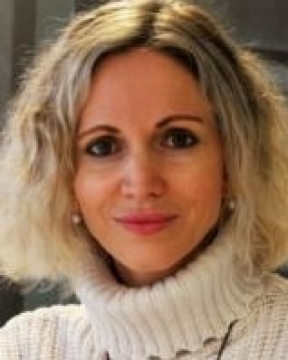 |
Dr. Olga MishinaEngineering Dobersek GmbHImportance Of Material Microstructure Studies For The Optimization Of The Roasting Processes In Non-ferrous Metallurgy Stelter International Symposium (10th Intl. Symp. on Sustainable Non-ferrous Smelting & Hydro/Electrochemical Processing) Back to Plenary Lectures » |
Abstract:Roasting processes in the pyrometallurgical production of non-ferrous metals are very complex, taking into account the chemical and mineralogical composition of the raw materials, as well as the complexity of the chemical reactions which take place in the roasting aggregate. Laboratory-scale characterization of the initial materials, intermediates, and final products gives researchers the possibility to propose the most likely possible reaction mechanism in order to guide the roasting process towards the desired products. On the other hand, studying the microstructure of materials helps to understand the reasons for the lack of the roasting process efficiency for a certain application case. More recently, the development and application of advanced thermodynamic software additionally helps to predict more accurately the phase distribution and overall dynamics of the roasting process, prior to experimental laboratory tests, thus increasing the probability of successful replication on a larger scale. This paper presents the results of microstructural investigation of three different materials which are used in non-ferrous metallurgy as primary or secondary raw materials: 1) copper-iron sulphide flotation concentrate (Republic of Serbia), 2) lead and arsenic containing dust from copper smelter (Republic of Kazakhstan), and 3) gold containing residues from gold winning plant (Republic of Uzbekistan). Samples of sulphide copper concentrate were roasted at 425°C, 675°C and 950°C in an air atmosphere for 1 hour. The experimental characterization included chemical and quantitative microstructural analysis of the initial sample, XRD and SEM/EDS analyses of the initial sample and roasted products. Thermodynamic prediction of the equilibrium compositions and phase distribution at elevated temperatures was done using HSC Chemistry software (ver. 6.1) under the incomplete and complete roasting conditions. Samples of lead- and arsenic-containing dust from copper smelter were subjected to sulphatising roasting in a pilot-scale fluidised bed furnace at temperatures of 400-550°C for 1 hour. The data of the initial dust and calcine samples investigation by scanning electron microscopy and X-ray spectral microanalysis (SEM and XRMS) allowed to detect and eliminate the cause of insufficient efficiency of impurity removal into the gas phase. The samples were also studied by chemical analysis and X-Ray diffraction analysis. In the next example under consideration, the starting material and products of oxidative roasting of sulphide- and carbonaceous-bearing gold plant residues at 500-700°C were investigated. In addition to the methods of chemical analysis, optical studies, X-ray phase analysis and diagnostic leach, the use of the scanning electron microscope study equipped with a dual-detector X-ray microanalysis system provided the most complete information explaining the cause of incomplete gold recovery at the downstream roasting stage of cyanidation. Application of the scanning electron microscopy method with local X-ray spectral analysis allows not only to establish the percentual content of minerals in the investigated sample, but also to determine the elemental distribution within the mineral, the degree of mineral liberation in individual particles of the sample, as well as to determine the association of the mineral/component of interest with other minerals, the quality of its surface, size and shape. This information helps the scientists and experts to optimise metallurgical processes, particularly, as the results have shown, the roasting process. |
|